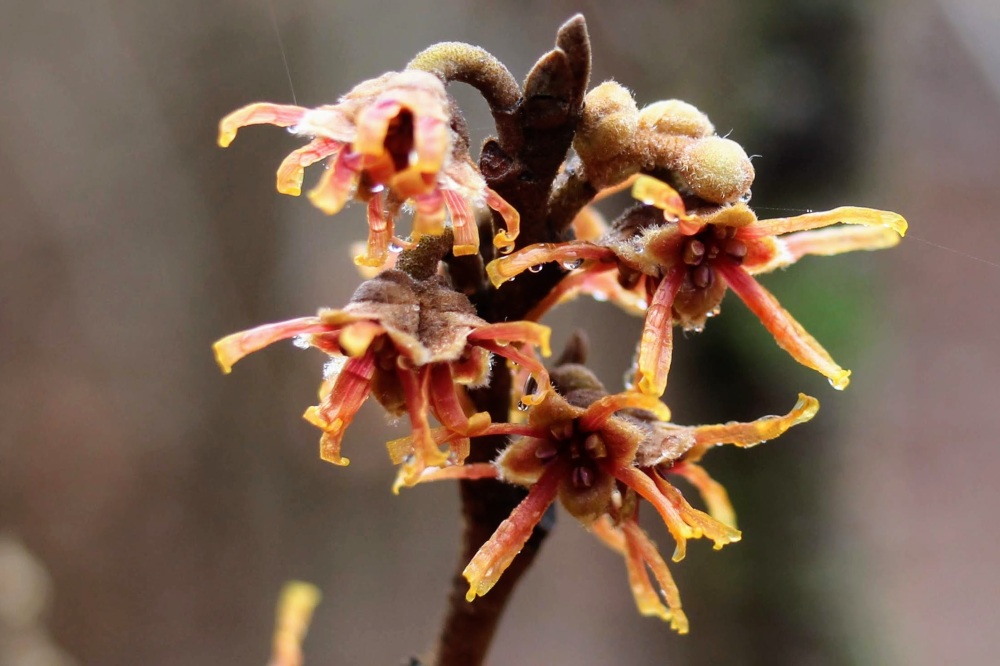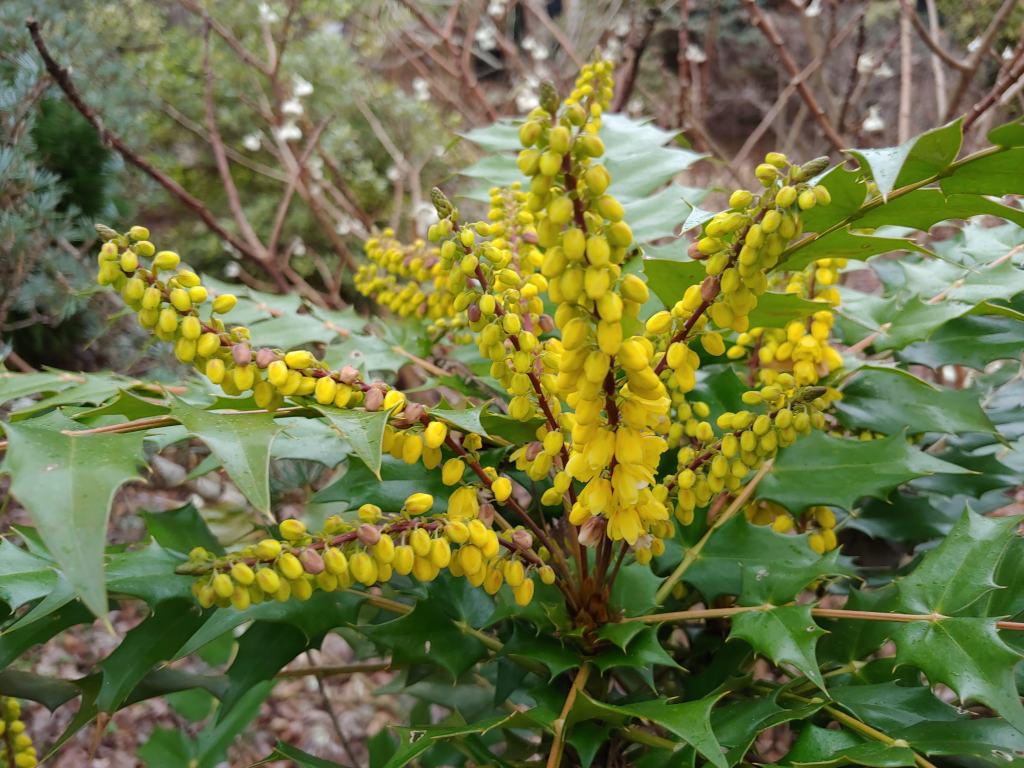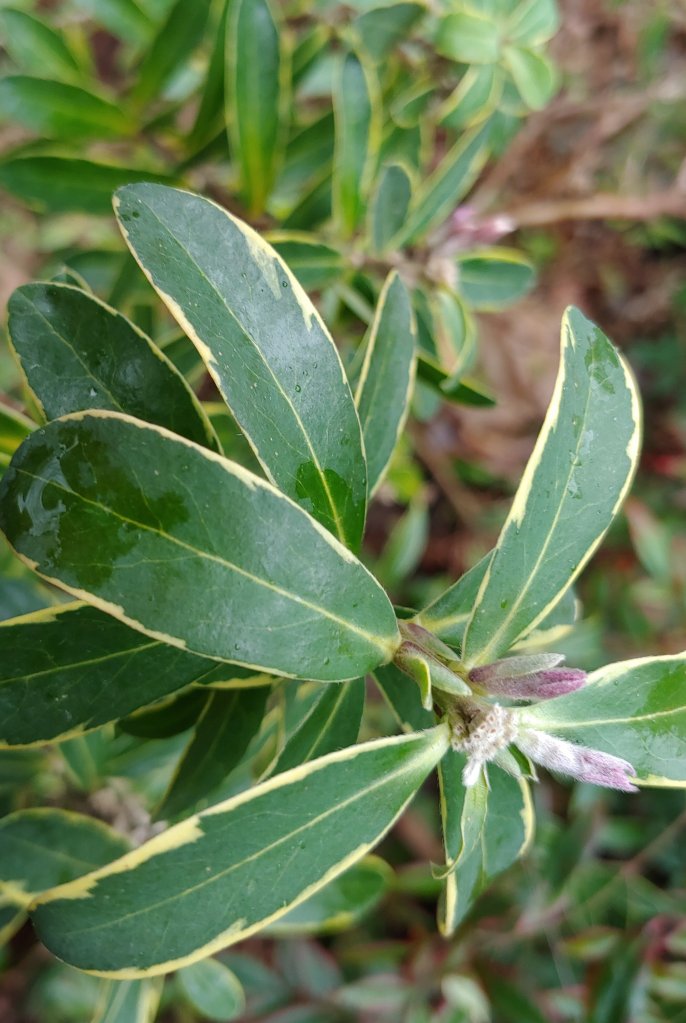I’ve caught a bit of a cold after two days walking a trade show with ten thousand other plant people, so my already diminished sense of smell is reduced even further. Still, on this calm morning, with the air heavy from last night’s downpour, the fragrance from the vernal witch hazel (Hamamelis vernalis) is enough in the lower part of the rear garden that even I can recognize it.

Hybrid witch hazels (Hamamelis x intermedia ‘Jelena’, below) closeby are breaking bud, so soon there will be more flowers and fragrance. Flowers of the vernal witch hazel are smaller and more muted in color and scent than blooms of the hybrids, but I cannot argue with any flower or fragrance in mid winter. In mild weather or in the cold, I’m outdoors as buds crack to show the first glimpse of color, and to watch as flowers curl shut on frigid nights. Interestingly (at least to me), I’ve hesitated to call vernal witch hazel a native since references state it is found to the west of the Blue Ridge Mountains. However, this week I saw many ready to flower in mountains an hour west of my home. That’s close enough for me, and all the more reason to plant this shrubby winter bloomer (of course, alongside a variety of the hybrids).

The winter flowering mahonias (Mahonia x media ‘Charity’, below) are just past their peak, and while I read that they are sweetly fragrant, I smell nothing. I am somewhat surprised by the lack of bees in this spell of warm temperatures (mid 60’s Fahrenheit), so again it is unlikely there will be berries. The leatherleaf mahonias (Mahonia bealei) show signs of flowering early, and almost certainly bees will be out and about by the time they’re blooming.

It’s not unusual for flower buds of several daphnes (Daphne x transatlantica ‘Summer Ice’, below) to swell during mild periods in mid winter, but then a cold spell comes and buds stand still until March, perhaps with a few scattered flowers late in February in the very odd warm late winter. Buds of the winter daphne (Daphne odora ‘Aureomarginata’) progress slowly through the winter, and these rarely flower earlier than March.

I notice swelling buds in the low, wide spreading clump of sweetbox (Sarcococca hookeriana var. humilis, below), but again it seems unlikely there will be flowers prior to March. For whatever reason, even at peak bloom I rarely notice its scent, but it’s a sturdy evergreen once it becomes established, and the fragrance is a bonus for gardeners who aren’t scent impaired.

Any impressions on MANTS? I was surprised this year how strictly they were enforcing the “no exit with plants” until 2 pm Friday.
For me, it was business as usual. Met a few new people, and an old buddy from Oregon who’s been out of the business for twelve years was back. When I walk the show I’m looking from a company perspective, and never even consider picking up a plant for myself.
I’ll be sniffing witch hazel flowers next time I see them! I hope your cold really is a mild one and that you’re soon feeling better.
My cold is long gone, and with warm temperatures this week other witch hazels are starting to flower.
That’s good news.
Are there more fragrant flowers than colorful flowers in winter because larger and more colorful flowers would be ruined by the weather, or because pollinators who are attracted to color are not active in the winter? hmmm
The very scattered winter blooms in this area must be fragrant to attract pollinators. Still, we see bees only in the rare times temperatures rise into the sixties.
So they are not much more active there than those who migrate south and out of the region for the winter. It sort of makes one wonder what those flowers are thinking. They must know what they are doing, since they get the job done regardless of what observers think about their technique.
Of course, there are more pollinators than just bees, but we don’t see anything flying except birds in our winter months. Bees will probably be out the next few days when it’s sixty degrees, and that’s all it takes to get the job done.